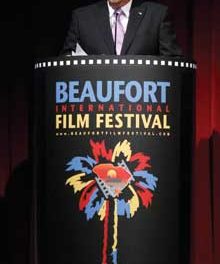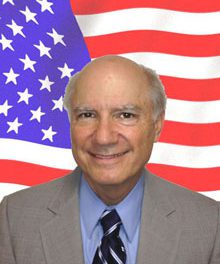 The 11th Beaufort International Film Festival enters a new dimension with a groundbreaking partnership with USCB
The 11th Beaufort International Film Festival enters a new dimension with a groundbreaking partnership with USCB
With each iteration, the Beaufort International Film Festival seems to expand its scope and refine its mission. Festival runners, Ron and Rebecca Tucker, have long sought to integrate an academic aspect into the festival, more so since BIFF moved into the USCB Center for the Arts.
But even as the school developed the historic campus into an arts hub, the university showed little interest in active association with the film festival. The 2017 festival marks a significant change with the addition of the Film and Digital Media Symposium and finally marks a partnership between the Beaufort Film Society (parent of BIFF) and USCB.
“It establishes an educational component to our vision statement which is to entertain, enrich, and educate through film,” says Ron Tucker.
The day-long event is the brainchild of USCB Media Arts Professor, Chris Maraffi (above). Better known as Topher, the author, animator, and designer came to Beaufort in 2014 to develop the fledgling Media Arts curriculum. Discovering the film festival played a pivotal role in his decision to take the job.
“This is something I actually envisioned before I came to Beaufort,” says Maraffi. “I interviewed right after the film festival and there were still posters up. And I thought, wow, Beaufort has an international film festival. That’s amazing. I knew it offered opportunities for what I wanted to build here.”
Maraffi and the Tuckers hit it off immediately. He’s judged the animation entries the last three years and sits on the BIFF Board of Advisors. Initiating a creative partnership between the University’s arts program and the film festival was always the plan.
“In all the other festivals I was invited to attend there was always this sort of academic conference,” he says, “particularly if it was on a university campus. It was a no-brainer to do this with BIFF.”
“Meeting with Topher a couple of years ago, we discussed how the Beaufort Film Society and USCB could partner in some type of Digital Media Program as part of the annual film festival,” says Ron Tucker. “We also discussed how students could work as volunteers for the festival and possibly serve as interns with the Film Society. At every film festival we had universities with major film studies coming into the Center for the Arts and showcasing their films as part of the Student Category of BIFF. Topher understood the value of a collaboration that would help nurture a fledgling program and kick start student interest.”
“Traditionally, the university has not been that involved with the film festival,” he notes. “There are some people on the other campus who don’t even know the film festival exists.” Maraffi’s been fighting to change this since he set foot in Beaufort, urging his students to volunteer and creating an intern program with the film society. This past year the university partnered with South Carolina Educational Television to utilize the old WJWJ Studio as a classroom and production facility and things began to change.
“This is all directly related to media and digital filmmaking, so it all kind of came together.”
The SCETV component literally opened the door for other departments to get involved in a variety of media projects. Maraffi sensed the timing was right to wrangle them all into the symposium.
“It helps the film festival because in order to grow they need something new, and the new thing is an educational component,” he says. “We can provide that as a university.”
The initial symposium is the proverbial toe in the water. The idea is to test things out, start small and build an annual event that adds an entirely new, cutting edge aspect to the film festival.
The first annual Film and Digital Media Symposium takes place Saturday, February 18 in a state of the art c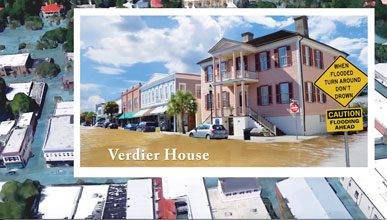 lassroom just down the hall from the auditorium. The day features a series of 40-minute talks by media professionals and educators followed by a short Q&A session. Each presentation is free and open to the public. Seating is limited to 25 attendees per talk on a first come, first serve basis and will be beamed to a corresponding classroom on the south campus.
lassroom just down the hall from the auditorium. The day features a series of 40-minute talks by media professionals and educators followed by a short Q&A session. Each presentation is free and open to the public. Seating is limited to 25 attendees per talk on a first come, first serve basis and will be beamed to a corresponding classroom on the south campus.
Maraffi kicks things off with a talk on creating animated effects for a documentary on climate change. He’s followed by local filmmaker, BIFF veteran and visual effects master, VW Scheich.
“Sometimes you don’t want to just see the movies, you want to see how they’re made,” says Scheich. “When I go to other festivals I take advantage of the workshops because you tend to meet some really cool filmmakers and learn some neat tricks that maybe you haven’t thought of before.”
Scheich’s recent VFX credits include House of Cards, Mad Max: Fury Road and the remake of Ben Hur in which he “erased” the stunt drivers in the chariot race sequence. Last year his first directorial feature, Interwoven, won the Audience Choice Award at BIFF.
“I work with a lot of big visual effects movies,” he says. “It’s a challenge to get your independent vision done with your independent budget and compete with the quality we’re used to seeing in these big blockbusters. How do you do that?”
Scheich’s 2013  BIFF debut, Wallenda, won the short feature category and he’ll dig into the process of creating the film’s extensive effects shots during his talk.
BIFF debut, Wallenda, won the short feature category and he’ll dig into the process of creating the film’s extensive effects shots during his talk.
“It all comes down to plan your shots and shoot your plan,” he says. “If you approach visual effects the way it used to be done – we’ll fix it in post-production – you’re doomed. But if you plan the effects specifically for the shot – like a space ship landing or some guy’s head exploding – with whoever’s doing the effects, then you’ll find if you move or don’t move the camera in specific ways it’s very doable and costs go way, way down just for that one little thing because it was planned it out in advance.”
In today’s digital world a massive part of that planning involves a process called  previsualization, or pre-vis in film vernacular. Not long ago that was limited to story boards – basically cartoon panels of the shot the filmmaker wants, the way he envisions it. Some filmmakers stick to the old-school methods. Director George Miller, the mastermind behind the Mad Max films, began making the Oscar winning Fury Road with 3500 story panels instead of a script. Eventually, though, the scope of the film required something more.
previsualization, or pre-vis in film vernacular. Not long ago that was limited to story boards – basically cartoon panels of the shot the filmmaker wants, the way he envisions it. Some filmmakers stick to the old-school methods. Director George Miller, the mastermind behind the Mad Max films, began making the Oscar winning Fury Road with 3500 story panels instead of a script. Eventually, though, the scope of the film required something more.
Most of today’s big budget blockbusters are born through digital pre-visual animation. Scheich’s worked extensively with one of the best FX studios in the business, The Third Floor. 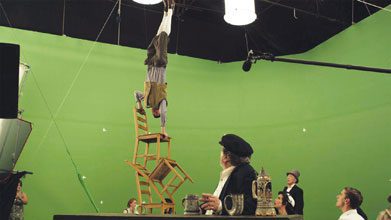 The studio’s state of the art pre-vis process helped define the look of recent hits like The Martian, The Jungle Book, Fantastic Beasts and Where to Find Them, Guardians of the Galaxy and a little flick called Rogue One: A Star Wars Story.
The studio’s state of the art pre-vis process helped define the look of recent hits like The Martian, The Jungle Book, Fantastic Beasts and Where to Find Them, Guardians of the Galaxy and a little flick called Rogue One: A Star Wars Story.
“They do some of the most amazing pre-planning animation around,” he says. “It’s almost good enough to be in the movie. And what it allows the filmmaker to do is to say, ‘Yes, I’m going to sign off on this crazy scene where we put a guy on a pole in front of a truck.’ Now, this only exists in the filmmaker’s head. But when it’s rendered digitally, the studio sees it and says, 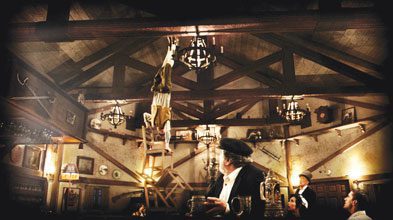 ‘Here’s the money to make it happen.’ In George Miller’s case, it cut down on the amount of VFX work because they could do most of this stuff on the set. It’s all about planning and that’s what I’m going to address as a filmmaker.”
‘Here’s the money to make it happen.’ In George Miller’s case, it cut down on the amount of VFX work because they could do most of this stuff on the set. It’s all about planning and that’s what I’m going to address as a filmmaker.”
Maraffi’s already looking ahead to 2018.
“Now that this has been greenlit as a university event, we can do it every year and continue to grow,” he says. “Who knows? Maybe next year we can bring in some people from L.A. I know people out there. VW knows people out there. Eventually we’ll do that and continue to expand and over the course of time turn it into a real conference. I think we’ve got a lot of resources coming in from various areas that are going to converge and make Beaufort into a center for this sort of thing.”
IF YOU’RE GOING
University South Carolina Beaufort & Beaufort International Film Festival
Present the 2017 Film & Digital Media Symposium
At USCB Center for the Arts
Saturday February 19, 2017
Classroom CFA 101
• 10am: “Creating 2.5D Stereoscopic Effects for an SCETV Documentary on Climate Change” by Topher Maraffi, MFA, MSc, USCB Department of Fine Arts.
• 11am: “Visual Film Effects on a Shoestring Budget” by VW Scheich, Award-Winning Filmmaker, Rareform Pictures & Locktix VFX Studio.
• Noon: Break for lunch (food and drinks provided).
• 1pm: “Integrating Mini-Documentaries in a Video Game Inspired by Gullah Culture and Lowcountry Folklore” by Brian Canada, PhD, USCB Department of Computational Science, & Candace Brasseur, MFA, Communications Director at Holy Trinity Classical Christian School.
• 2pm: “Hollywood Goes to the Lowcountry: Reflections on Lewis John Carlino’s film version of The Great Santini” by Jeffrey McQuillen, MA, USCB Department of English.
• 3pm: “You Can Be a Documentarian! Non-fiction Production Tips and Advice for the Amateur Filmmaker” by Sean Kingsbury, PhD, USCB Department of Communications.
• 4pm: “Inspiring Young Minds with a Curriculum in Animation, Creation and Design” by Christine Brown, Principal, Bluffton Elementary.
• 6pm-7pm: “SCETV Television Studio Tour & Reception” free event at the SCETV facility on the Technical College of the Lowcountry campus hosted by George Pate, Topher Maraffi, Sean Kingsbury, and Kim Sullivan of USCB & SCETV Beaufort. Doors open at 5:30pm. See how a television studio works with theatrical players and green screen special effects.
Get More Online:
www.uscb.edu/academics/academic_departments/fine_arts/symposium/index.html
Download VW Scheich’s “Wallenda” on iTunes and Amazon
Check out the world of Pre-Vis at http://thethirdfloorinc.com
The Beaufort International Film Festival
February 15 – 20th
Get Info & Tickets at www.beaufortfilmfesitval.com
Pictured Above: The four photos down the left side represent one shot – concept to final image – in VW Scheich’s award-winning short film Wallenda.

